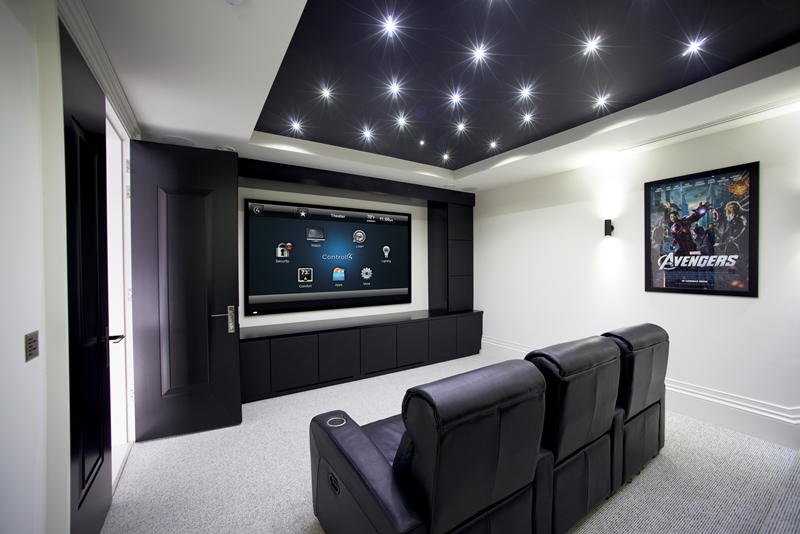Creating a home cinema is not merely setting up a display and a handful of audio systems; it’s about crafting an engaging experience that brings the enchantment of the cinema into your home. Regardless of whether you’re a movie enthusiast or simply enjoy watching films with family, the appropriate home cinema installation can transform an ordinary space into an extraordinary cinematic oasis. In this ultimate guide, we will discuss everything you need to know about home cinema installation, from choosing the ideal equipment to optimizing your room for audio and video.
Before you jump into the realm of home theaters, it’s crucial to understand the critical components and considerations to ensure a successful installation. We will discuss the distinctions between DIY and professional installations, highlight the top essential components for your system, and provide insights on how to make the most of your space regardless of its size. So, if you’re creating your first home cinema or seeking to enhance your current setup, this guide will provide you with the knowledge to create a truly exceptional home cinema experience.
Home Cinema Configuration Principles
Establishing a home cinema setup begins with grasping the area and equipment needs. Before diving into the installation, assess the room you plan to utilize. Consider factors such as space availability, illumination, and the configuration. An optimal home cinema should be dedicated, where the lighting can be managed, and all the components like seat arrangement and screen location can be adjusted for maximum viewing.
The subsequent phase is to assemble the essential components that will constitute your cinema configuration. This includes selecting a quality projector or big-screen television, a multi-channel audio system, and cozy seats. Ensure the projector you choose fits your area dimensions and illumination situation. Similarly, the sound system should be congruent with your space, whether you choose physical or remote options. Make a checklist of the most important necessary components to make sure no important aspect is forgotten.
Lastly, take into account the sound design and light of your home theater. Proper soundproofing can significantly enhance sound quality by reducing reverberation and optimizing audio clarity. Setting up adjustable illumination can help generate the perfect atmosphere for movie nights. With these foundational elements in place, you can start to shape a theater experience that competes with the movie theaters, tailored to your likes and setting.
Tech & Equipment Essentials
When establishing a home cinema, picking the right equipment is crucial for an in-depth experience. Commence with the projector system, which serves as the heart of your configuration. While 4K resolution is already standard, think about your space and viewing distance when deciding between 4K and the new 8K displays. Contemporary projectors come with features like HDR for better color accuracy, whereas high-end TVs, in comparison, provide superior brightness levels that boost the viewing experience. Researching the specifications and compatibility with your media sources guarantees you make the best choice for your home.
Surround sound systems perform a key role in the entire audio experience of your home cinema. A true surround sound setup typically includes a receiver, speakers, and a subwoofer to create an immersive audio landscape. Select the latest standards, such as Dolby Atmos, which offers a more rich sound field for movies. When choosing speakers, take into account the size of your room and the arrangement options available. Wired systems yield reliability, whereas wireless alternatives can reduce clutter and ease installation. Evaluate your space to determine which option aligns best with your needs.

In conclusion, investing in high-quality seating can elevate your cinema experience to another level. Comfort should be a top concern, as movie nights can go on for hours. Search for ergonomic designs that provide excellent support, and explore options with cup holders or recline features. Additionally, consider room layout and sight lines to enhance the viewing experience from every seat. Remember that the combination of high-quality tech, great sound, and cozy seating will form the ultimate atmosphere for enjoying your favorite films.
Styles & Atmosphere Factors
When creating the perfect home cinema, layout and ambiance have a crucial role in enhancing the overall cinematic experience. The choice of hues, fabrics, and materials can impact both the sound quality and the aesthetic appeal of the room. Choosing for richer shades on the walls and ceiling can reduce light reflection, helping to establish a more immersive environment. Additionally, opting for look at here now that match the cinema's theme can contribute to the room's overall vibe and make for a more fun movie night.
Lighting is another critical aspect to consider when establishing your home theater. A varied lighting strategy allows for flexibility in creating the ideal ambiance. Dimmable lights, sconces, and LED strips can provide not only practical lighting but also establish the mood for different film genres. Keep in mind incorporating smart lighting systems that can be controlled via a remote control or smartphone, making it easy to change the brightness as required depending on the hour or the film being played.
Sound treatments are vital for enhancing sound quality in your theater. Placing sound-absorbing panels, bass traps, and diffusers can help reduce extraneous echoes and improve general sound clarity. Additionally, including rugs and heavy curtains can also absorb sound, making the room feel comfortable while improving the listening experience. In combination, these design elements combine effectively to create an inviting and high-quality cinema atmosphere.
